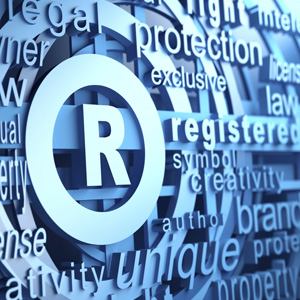How to compare the trademarks with the significant things
It is indeed to analyse and compare our trademark with our competitors in order to identify the deception or similarity associated with that. Here, we are going to discuss the relevant things on similarity of the marks that you must consider before getting into the process of choosing a trademark.
Twin test –Competing mark and reaction of purchaser:

In deciding whether a particular trademark is likely to deceive or cause confusion that duty is not discharged by arriving at the result by merely comparing it with the trademark which is already registered and whose proprietor is offering opposition to the registration of the mark. The real question is to decide in such cases is to see as to how a purchaser who must be looked upon as average man of ordinary intelligence would react to a particular trademark, what association he would form by looking at the trademark and in what respect he would connect the trademark with the goods which he would be purchasing.
Anti-dissection rule:

Rule and the dissection of a mark is an exception which is generally not permitted and not can be applied only in exceptional cases. This rule is purely based upon observation of the customer behaviour.
Generally the typical shopper does not hold all the individual details of a composite mark in his or her mind but only the overall impression created by the composite mark.
In litigation over the alleged similarity of marks, the owner emphasizes the similarities and the alleged infringer emphasizes the differences. The point is that the two marks should not be examined with a microscope to find the differences, for this is not the way the average purchaser views the marks. To the average buyer, the points of similarity are more important than minor points of difference. A court should not engage in technical gymnastics in an attempt to find some minor differences between conflicting marks. However, where there are both similarities and differences in the marks, there must be weighed against one another to see which predominate.
Compare the marks:

While comparing the marks, they are to be seen as a whole. It is not right to take a part of the word and compare it with another part particularly in pharmaceutical and medicinal preparations sector, where word trademarks have a common prefix, the question whether they are similar depends on the following factors.
- The extent of similarity or dissimilarity in remaining parts;
- Whether the prefix is descriptive or common to the trade,
- The relative emphasis of the prefix and the remaining part in appearance and sound;
- Whether the words are short or long;
- Whether the words are likely to be slurred;
- Whether the prefix or words as a whole convey any memorable ideas and
- Other surrounding circumstances.
Rules of comparison to detect deceptive similarity:

With regard to detecting deceptive similarity, the position in law is already stated, viz., a trademark cannot be registered if it is of such nature as to deceive the public or cause confusion or it is similar with an earlier trademark and goods covered by the trademark are similar. From pronouncements of the courts from time to time on deceptive similarity, the following rules of comparison can be culled out:
- Meticulous comparison not the correct way.
- Mark must be compared as a whole.
- First impression.
- Prima facie view not conclusive.
- Structural resemblance.
- Similarity in idea to be considered.
In this process, the plaintiff is required to prove the following:
- The business consists of, or includes selling a class of goods to which the particular trade name applies;
- That the class of goods is clearly defined and is distinguished in the public mind from other goods;
- Because of the reputation of the goods, there is goodwill in the name;
- The plaintiff is a member of the class selling the goods is the owner of goodwill which is of substantial value;
- He has suffered or is likely to suffer damage.
Similarities more important:

In determining whether a mark is considered confusingly similar to a protected mark, the similarities are more important than the differences between the two marks. Among many things which are looked at and compared, three things visual similarity, phonetic similarity and general impression are most important.
While doing so, each mark is to be considered separately in its entirely and not compared by keeping both side by side. To determine confusing similarity, the marks are generally compared with respect to pronunciation, appearance, and meaning or verbal translation. For example, although two marks might be spelled differently, they may still be pronounced in the same way and hence, might be considered confusingly similar. Similarity to appearance is determined in the context of the general presentation of the trademarks on the product.
Similarity in meaning depends on the mental impact made on the consumer as a result of the psychological imagery evoked by the marks concerned. Therefore, translation of words, especially from well-known languages, are taken into account to determine whether there exists confusing similarity in relation to the similar to a word “mark” depending on the mental impression each of the marks creates, for example, between the word mark “arrow” and the figurative mark consisting of a drawing of an arrow.
Phonetic similarity:

Even though the registration of the mark basically is of its graphical presentation, yet while determining similarity the spoken part of the trademark plays equal importance as its visual part. An appellant filed an application for registration of a trademark consisting of a label containing three panels; on the first and third panel were written the words “SRI ANDAL MADRAS SNUFF”. The central panel contained the picture of goddess “SRI ANDAL”. The owners of “SRI AMBAL” opposed the registration of trademark “SRI ANDAL” on the ground that it is deceptively similar to their registered trademark “SRI AMBAL”.
Test of eye and ear and marks not to be kept side by side:
In this case, the visual resemblance was much less, even though marks were not to be kept side by side. The court held that the test of deceptive similarity had to be satisfied both by the single of eyes as well as ears.
There was to be perceived a use of the proposed mark in normal manner when normal and fair use of registered trademark was to be assumed to preexist. The question was whether in such a situation, an average person exercising ordinary caution would be confused or he would wonder on seeing “SRI ANDAL” whether they were the same goods which he had come across when “SRI AMBAL” had been operating in the market. There was a close affinity of sound between the two marks and the two words were in fact deceptively similar in sound. The appeal for registration of trademark “SRI ANDAL” was not allowed as the registration of the trademark. The trademark was similar to an earlier trademark and there was identity of goods and there was a likelihood of confusion on the part of public. Thus, the trademark could not be registered.
Visual similarity:

Sometimes the trademarks may not be similar, but the getup or colour scheme or the complete impression of two marks may be the same. This would be considered as a visual deceptive similarity and the registration is not allowed.
For instance:
WONTEX vs. WINTEX for similar goods:
The registration of “WONTEX” in respect of over-lock bag closer, embroidery machines and the spare parts was refused as it was phonetically, visually and structurally similar to registered mark “WITNEX” in respect of sewing machines and the spare parts. Also the goods or both the parties were similar and of same description, trade channels were also same and prior use of opponents was also accepted.
Explanation for adoption of trademark:
Explanation for adoption of similar mark becomes important and if it is not found satisfactory, it is considered dishonest selection or seeking to trade on the reputation of a prior mark and the registrar or the court is likely to take an adverse view.
General impression:
The determining factor while analysing the possibility of deception or confusion on part of the public, is the general impression likely to be made on the average consumer and not by the fact that the marks are distinguishable upon careful examination. In certain cases, the standard of confusing similarity might vary, depending on the type of product or on the relevant group of consumers. Trade dress is the important factor with which a customer makes an impression about the origin of goods or services.
For more details -> Click here
